Alan R. Gaby, M.D., Jonathan V. Wright, M.D., Forrest Batz, Pharm.D. Rick Chester, RPh., N.D., DipLAc. George Constantine, R.Ph., Ph.D. Linnea D. Thompson, Pharm.D., N.D.
See book keywords and concepts |
 Scutellaria lateriflora grows in eastern North America and is most commonly used in United States and European herbal products containing scullcap. The above-ground (aerial) part of the plant is used in herbal preparations. It is not interchangeable with Chinese scullcap (page 658). Scutellaria lateriflora grows in eastern North America and is most commonly used in United States and European herbal products containing scullcap. The above-ground (aerial) part of the plant is used in herbal preparations. It is not interchangeable with Chinese scullcap (page 658). |
Leslie Taylor, ND
See book keywords and concepts |
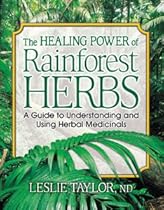 It is unfortunate that a handful of unethical companies can affect the entire herbal products industry negatively with such scurrilous practices, but it continues to happen.
Although not widely available, tayuya is being employed by several companies as an ingredient in various herbal formulas (typically for pain, arthritis, and detoxification). Generally, it is employed by South American herbalists in combination with other plants, and not as a single therapy. Consumers and manufacturers should stick with reputable harvesters and importers for sourc-ing this particular tropical plant. It is unfortunate that a handful of unethical companies can affect the entire herbal products industry negatively with such scurrilous practices, but it continues to happen.
Although not widely available, tayuya is being employed by several companies as an ingredient in various herbal formulas (typically for pain, arthritis, and detoxification). Generally, it is employed by South American herbalists in combination with other plants, and not as a single therapy. Consumers and manufacturers should stick with reputable harvesters and importers for sourc-ing this particular tropical plant. |
Alan R. Gaby, M.D., Jonathan V. Wright, M.D., Forrest Batz, Pharm.D. Rick Chester, RPh., N.D., DipLAc. George Constantine, R.Ph., Ph.D. Linnea D. Thompson, Pharm.D., N.D.
See book keywords and concepts |
 The root of another Asian species of kudzu, Pueraria thomsonii, is also used for herbal products.
Kudzu has been used in connection with the following conditions (refer to the individual health concern for complete information):
Rating Health Concerns
•kftiz Alcohol withdrawal support (page 12) Angina (page 27)
Historical or traditional use (may or may not be supported by scientific studies)
Kudzu root has been known for centuries in Traditional Chinese Medicine as ge-gen. The first written mention of the plant as a medicine is in the ancient herbal text of Shen Nong (circa A.D. 100). The root of another Asian species of kudzu, Pueraria thomsonii, is also used for herbal products.
Kudzu has been used in connection with the following conditions (refer to the individual health concern for complete information):
Rating Health Concerns
•kftiz Alcohol withdrawal support (page 12) Angina (page 27)
Historical or traditional use (may or may not be supported by scientific studies)
Kudzu root has been known for centuries in Traditional Chinese Medicine as ge-gen. The first written mention of the plant as a medicine is in the ancient herbal text of Shen Nong (circa A.D. 100). |
| Although rare, it points to the need for consumers to purchase herbs from companies that carefully test their herbal products for adulteration.
PLEURISY ROOT
Botanical name: Asdepias tuberosa Parts used and where grown
As its common name indicates, the root of pleurisy root is used as medicine. This brilliant-orange-flowered herb is native to and continues to grow primarily in the southwestern and midwestern United States. Many plants similar to pleurisy root are known as milkweeds because they produce a milky sap—something pleurisy root does not do. |
| Test tube and animal research suggests that substances found in turmeric (page 753), cloves, eucalyptus (page 673), and seaweed have potential benefit for topical prevention of genital herpes, but no human research using available herbal products has been performed.23
Holistic approaches that may be helpful
Stress plays a major role in the recurrence of genital herpes outbreaks. |
| Although hot water-extracted products made from Coriolus versicolor are available in the United States without prescription, the extent to which these herbal products produce the effects of Japanese PSK remains unknown.
Eleuthero (page 672) (Eleutherococcus senticosus, Acanthopanax senticosus)
Also known as Siberian ginseng, eleuthero has been shown to enhance immune function (page 255) in preliminary Russian trials studying people with cancer, particularly breast cancer.233' 234 These rrials typically used 1 to 2 ml of a fluid extract taken three times per day for at least one month. |
Bryan Hanson, PhD
See book keywords and concepts |
 One can purchase a wide variety of herbal products at virtually any drugstore or all-purpose retailer. Television and magazine ads proclaim the virtues of garlic, ginkgo, and ginseng. You probably know people who regularly use herbal supplements, and you may have used them yourself.
If you have picked up this book and read this far, you are probably the kind of person who has, at one time or another, wondered exactly how drinking an herbal tea can help prevent cancer, or how taking Echinacea capsules can help you beat a cold. One can purchase a wide variety of herbal products at virtually any drugstore or all-purpose retailer. Television and magazine ads proclaim the virtues of garlic, ginkgo, and ginseng. You probably know people who regularly use herbal supplements, and you may have used them yourself.
If you have picked up this book and read this far, you are probably the kind of person who has, at one time or another, wondered exactly how drinking an herbal tea can help prevent cancer, or how taking Echinacea capsules can help you beat a cold. |
| In fact, many herbal products have multiple therapeutic effects, which shouldn't surprise us—as we've learned, a variety of chemicals are present in any plant. Unfortunately, relatively few plants have been investigated in great detail. In this chapter we will look at several plants whose biological activity is fairly well understood. Some will likely be familiar, and others are not exactly the type of herbs you would plant in your garden or read about in the supermarket checkout aisle. |
Leslie Taylor, ND
See book keywords and concepts |
 More is Not Always Better:
Be Careful About Dosage Amounts
Too many Americans today buy into the idea that herbal products and medicinal plants are like food and are more or less benign and/or safe at any dosage. This is partly a result of legal restrictions stating that these products must be sold as "food supplements" in the United States. Also at play is that old American philosophy of excess: "if some is good, more is better." This idea is also somewhat prevalent in the food and dietary supplements market. More is Not Always Better:
Be Careful About Dosage Amounts
Too many Americans today buy into the idea that herbal products and medicinal plants are like food and are more or less benign and/or safe at any dosage. This is partly a result of legal restrictions stating that these products must be sold as "food supplements" in the United States. Also at play is that old American philosophy of excess: "if some is good, more is better." This idea is also somewhat prevalent in the food and dietary supplements market. |
Kevin Trudeau
See book keywords and concepts |
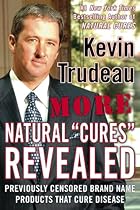 American herbal products Association www.ahpa.org (301)588-1171
D. See a homeopathic practitioner.
Check your local yellow pages for a homeopathic practitioner.
Homeopathic Educational Services www.homeopathic.com (800) 359-9051
The National Center for Homeopathy www.homeopathic.org (703) 548-7790
Homeopathic Academy of Naturopathic Physicians www.hanp.net (253) 630-3338
American Institute of Homeopathy www.homeopathyusa.org (888) 445-9988
North American Society of Homeopaths www.homeopathy.org (206) 720-7000
E. See a naturopath. American herbal products Association www.ahpa.org (301)588-1171
D. See a homeopathic practitioner.
Check your local yellow pages for a homeopathic practitioner.
Homeopathic Educational Services www.homeopathic.com (800) 359-9051
The National Center for Homeopathy www.homeopathic.org (703) 548-7790
Homeopathic Academy of Naturopathic Physicians www.hanp.net (253) 630-3338
American Institute of Homeopathy www.homeopathyusa.org (888) 445-9988
North American Society of Homeopaths www.homeopathy.org (206) 720-7000
E. See a naturopath. |
Bryan Hanson, PhD
See book keywords and concepts |
 Cases of human poisoning and death from the use of herbal products contaminated with plants containing pyrrolizidine alkaloids have been recorded in the United States. Comfrey (Symphytum officinale) is an herb whose leaves are frequently used to treat skin conditions. Although one occasionally reads that it can be taken internally, this is an extremely bad idea due to the presence of the pyrrolizidine alkaloid symphytine.8
Quinoline Ring System
This alkaloid family has relatively few representatives. Cases of human poisoning and death from the use of herbal products contaminated with plants containing pyrrolizidine alkaloids have been recorded in the United States. Comfrey (Symphytum officinale) is an herb whose leaves are frequently used to treat skin conditions. Although one occasionally reads that it can be taken internally, this is an extremely bad idea due to the presence of the pyrrolizidine alkaloid symphytine.8
Quinoline Ring System
This alkaloid family has relatively few representatives. |
Phyllis A. Balch, CNC
See book keywords and concepts |
 The extract of its fan-shaped leaves is one of the world's most popular herbal products. It has been reported in scientific journals to enhance blood circulation and to increase the supply of oxygen to the heart, brain, and all bodily parts. This makes it useful for improving memory and relieving muscle pains. It also acts as an antioxidant, has antiaging effects, reduces blood pressure, inhibits blood clotting, and is helpful for tinnitus, vertigo, hearing loss, impotence, and Raynaud's disease.
Ginkgo biloba is widely known as the "smart herb" of our time. The extract of its fan-shaped leaves is one of the world's most popular herbal products. It has been reported in scientific journals to enhance blood circulation and to increase the supply of oxygen to the heart, brain, and all bodily parts. This makes it useful for improving memory and relieving muscle pains. It also acts as an antioxidant, has antiaging effects, reduces blood pressure, inhibits blood clotting, and is helpful for tinnitus, vertigo, hearing loss, impotence, and Raynaud's disease.
Ginkgo biloba is widely known as the "smart herb" of our time. |
| Other herbs and herbal products beneficial for cardiovascular disorders include barberry, black cohosh, butcher's broom, cayenne (capsicum), dandelion, ginseng, SP-8 Hawthorn Motherwort Blend from Solaray, and valerian root.
Cautions: Do not use barberry or black cohosh during pregnancy. Do not use ginseng if you have high blood pressure. Completely avoid the herbs ephedra (ma huang) and licorice; they can cause a rise in blood pressure. |
Josef A. Brinckmann and Michael P. Lindenmaier
See book keywords and concepts |
 The American herbal products Association recommends that all herbal products containing toxic pyrrolizidine alkaloids bear the following cautionary label statement: For external use only. Do not apply to broken or abraded skin. Do not use when nursing.
Authentication: Macroscopic (see also: Description) and microscopic, following the Farfarae folium monograph of the DAB 1996, where butterbur leaves are described as an adulterant (see also [20]). Fig. 5 shows the typical, articulated covering trichomes. The American herbal products Association recommends that all herbal products containing toxic pyrrolizidine alkaloids bear the following cautionary label statement: For external use only. Do not apply to broken or abraded skin. Do not use when nursing.
Authentication: Macroscopic (see also: Description) and microscopic, following the Farfarae folium monograph of the DAB 1996, where butterbur leaves are described as an adulterant (see also [20]). Fig. 5 shows the typical, articulated covering trichomes. |
Amarjit S. Basra
See book keywords and concepts |
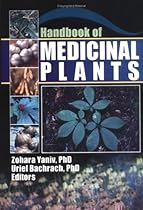 The concept of balance, which provides the philosophical basis for Chinese and ayurvedic medicine, is amenable to the concept of this type of medicine, so it is not surprising that several herbal products for which adaptogenic properties are claimed originate from these cultures. Although the plant extracts are claimed to affect many different systems in the body, the CNS is also affected such that depressed patients are stimulated while those suffering agitation become more relaxed. The concept of balance, which provides the philosophical basis for Chinese and ayurvedic medicine, is amenable to the concept of this type of medicine, so it is not surprising that several herbal products for which adaptogenic properties are claimed originate from these cultures. Although the plant extracts are claimed to affect many different systems in the body, the CNS is also affected such that depressed patients are stimulated while those suffering agitation become more relaxed. |
James A. Duke, Ph.D.
See book keywords and concepts |
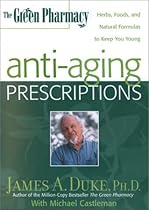 When you're out shopping for herbal products, don't hesitate to ask questions. Many health food store clerks are fairly well-informed about herbs. Also, be sure to read product labels carefully. If a label lists only an herb's common name and you're not familiar with it, don't buy the product. Look for a standard common name as well as the botanical nomenclature, which identifies an herb by its genus and species.
Labels reveal other valuable information about the quality of herbal products. My advice is to consider the following when making your selection. standardization. When you're out shopping for herbal products, don't hesitate to ask questions. Many health food store clerks are fairly well-informed about herbs. Also, be sure to read product labels carefully. If a label lists only an herb's common name and you're not familiar with it, don't buy the product. Look for a standard common name as well as the botanical nomenclature, which identifies an herb by its genus and species.
Labels reveal other valuable information about the quality of herbal products. My advice is to consider the following when making your selection. standardization. |
Mark Blumenthal
See book keywords and concepts |
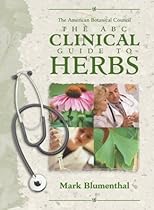 In addition, the following nutrients must also be declared if present in quantities exceeding what can legally be declared as zero: vitamins A, C, D, E, K, B-l, B-2, B-3, B-6, B-12, folic acid, biotin, calcium, iron, phosphorus, iodine, magnesium, zinc, selenium, copper, manganese, chromium, molybdenum, chloride, and potassium. Most herbal products contain negligible amounts of these nutrients.
9. "Percent Daily Value" (%DV) indicates the percentage of daily intake provided by the herb. In addition, the following nutrients must also be declared if present in quantities exceeding what can legally be declared as zero: vitamins A, C, D, E, K, B-l, B-2, B-3, B-6, B-12, folic acid, biotin, calcium, iron, phosphorus, iodine, magnesium, zinc, selenium, copper, manganese, chromium, molybdenum, chloride, and potassium. Most herbal products contain negligible amounts of these nutrients.
9. "Percent Daily Value" (%DV) indicates the percentage of daily intake provided by the herb. |
Kevin Trudeau
See book keywords and concepts |
 However, it is interesting to note that television stations, newspapers, magazines, and radio stations routinely will not accept advertising for all-natural herbal products, homeopathic products, vitamins, minerals, or books that are critical of the pharmaceutical industry. Ads for this book, for example, have been rejected by many ABC television stations, as well as CNBC. The reason, in my opinion, is because this book is critical of the pharmaceutical industry and the food industry, and those industries put pressure on the media not to run advertising for this book. However, it is interesting to note that television stations, newspapers, magazines, and radio stations routinely will not accept advertising for all-natural herbal products, homeopathic products, vitamins, minerals, or books that are critical of the pharmaceutical industry. Ads for this book, for example, have been rejected by many ABC television stations, as well as CNBC. The reason, in my opinion, is because this book is critical of the pharmaceutical industry and the food industry, and those industries put pressure on the media not to run advertising for this book. |
Heather Boon, BScPhm, PhD and Michael Smith, BPharm, MRPharmS, ND
See book keywords and concepts |
 As part of a series of provisional measures, some herbal products were classified as drugs in a special category called "Traditional Herbal Medicines." Traditional Herbal Medicines could only be intended for self-medication use; all the active ingredients had to be herbal; and the therapeutic indication had to be supported by herbal reference texts at the dose provided. As part of a series of provisional measures, some herbal products were classified as drugs in a special category called "Traditional Herbal Medicines." Traditional Herbal Medicines could only be intended for self-medication use; all the active ingredients had to be herbal; and the therapeutic indication had to be supported by herbal reference texts at the dose provided. |
| The quality of herbal products such as echinacea can be quite variable depending on the country in which the product is manufactured/sold. This situation makes it difficult to determine efficacy and potential risk for echinacea products.
DRUG INTERACTIONS
None reported by the German Commission E;84 however, its effects oppose the action of immunosuppressants. |
| DRUG INTERACTIONS
While no clinical instances were found, caution is prudent when herbal products containing hops are used with hypnotic medications and alcohol.3 The implication of induction of components of the cytochrome P450 system on concurrent drug therapy has yet to be evaluated.
DOSAGE REGIMENS1
þ dried strobiles: 0.5-1.0 g of three times daily and before bed.
þ liquid extract (1:1 in 45% ethanol): 0.5-1 mL three times daily and before bed. ?•• tincture (1:5 in 60% ethanol): l-2mL of three times daily and before bed. |
| In addition, herbal products containing scullcap as one of the ingredients have been implicated in a number of cases of hepa to toxicity,1617 which has resulted in the removal of a number of herbal scullcap preparations from the market in the United Kingdom.17 Instances of hepato-toxicity may have been due to adulteration or substitution of scullcap with any of several species of germander (Teucrium canadense L., T. chamaedrys L., etc.). |
David Hoffman, FNIMH, AHG
See book keywords and concepts |
 Holism is a context, not a belief system or a specific physical form, and as such, herbal products are not and cannot be holistic in their own right.
The mere use of herbal medicines does not make a treatment holistic. In fact, using an herbal tincture as a natural alternative to a prescription medication relegates the herb to the status of an organic drug delivery system! What makes herbs part of holistic treatment is the context within which the herbs are prescribed and used. Holism is a context, not a belief system or a specific physical form, and as such, herbal products are not and cannot be holistic in their own right.
The mere use of herbal medicines does not make a treatment holistic. In fact, using an herbal tincture as a natural alternative to a prescription medication relegates the herb to the status of an organic drug delivery system! What makes herbs part of holistic treatment is the context within which the herbs are prescribed and used. |
| American herbal products Association's Botanical Safety Handbook. Boca Raton, FL: CRC Press, 1997.
4. Mclntyre A. The Herbal for Pregnancy and Childbirth. Shaftesbury, UK: Element Books, 1992.
5. Pizzorno JE, Murray MT. The Textbook of Natural Medicine. Edinburgh: Churchill Livingstone, 1999.
Suggested Reading
Gladstar R. Herbal Healing for Women. New York: Simon & Schuster, 1993.
Green J. Male Herbal: Health Care for Men and Boys. Freedom,
CA: Crossing Press, 1991. Hudson T. Women's Encyclopedia of Natural Medicine. Los
Angeles: Lowell House; Chicago: Contemporary Books,
1999. |
Earl L. Mindell, RPh, PhD with Virginia Hopkins, MA
See book keywords and concepts |
| Some examples of drugs that contain caffeine are Anacin, Extra Strength Excedrin, Bayer Select Maximum, Midol, and Vanquish. herbal products with zippy names and energy-boosting claims may be nothing more than concentrated ephedra, caffeine, or guarana, a South American herb that contains high levels of caffeine.
Allergy and cold medicines may contain synthetic variations of ephedrine, such as pseudo-ephedrine (Sudafed), which can keep you awake. The asthma drug theophylline (Bronkaid and Primatene tablets, Tedral and others) is a stimulant that can make sleeping difficult. |
David Hoffman, FNIMH, AHG
See book keywords and concepts |
 In the journal's Clinical Rounds section, this table was presented under the headline "Herbal Products Being Evaluated Under an IND Investigation." (IND stands for Investigational New Drug Application, a request for authorization from the Food and Drug Administration to administer an investigational drug or biological product to humans.)
If the AMA considers sharks (an animal), zinc (a metal), and arginine (an amino acid) to be herbs, there is a profound educational discrepancy at work here. In the journal's Clinical Rounds section, this table was presented under the headline "Herbal Products Being Evaluated Under an IND Investigation." (IND stands for Investigational New Drug Application, a request for authorization from the Food and Drug Administration to administer an investigational drug or biological product to humans.)
If the AMA considers sharks (an animal), zinc (a metal), and arginine (an amino acid) to be herbs, there is a profound educational discrepancy at work here. |
Elson M. Haas, M.D.
See book keywords and concepts |
 Zand Herbal Formulas
1722 14th St, Suite 230 Boulder, CO 80302 800-800-0405
Zand makes good herbal products including its 7-day Detox formula.
Practitioners, Facilities, and Spas
Spa Bar www.spa-bar.com
Owner: Galen Yuen
Spa Director: Taran Collis
246 Second Street
San Francisco, CA 94105
415-975-0888
The Spa Bar in downtown San Francisco is the first in a chain opening in airports and malls across the country in the next year. They offer detoxifying treatments such as lymphatic and Swedish massage, herbal and seaweed wraps, and salt scrubs. Zand Herbal Formulas
1722 14th St, Suite 230 Boulder, CO 80302 800-800-0405
Zand makes good herbal products including its 7-day Detox formula.
Practitioners, Facilities, and Spas
Spa Bar www.spa-bar.com
Owner: Galen Yuen
Spa Director: Taran Collis
246 Second Street
San Francisco, CA 94105
415-975-0888
The Spa Bar in downtown San Francisco is the first in a chain opening in airports and malls across the country in the next year. They offer detoxifying treatments such as lymphatic and Swedish massage, herbal and seaweed wraps, and salt scrubs. |
Joe Graedon and Teresa Graedon
See book keywords and concepts |
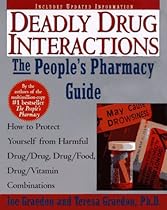 Yet in recent years alternative remedies—including herbal products available in health food stores and through the mail—have become increasingly popular.
There is, sad to say, very little research on the potential for herbal products to interact with other medications. You won't find many references to such problems in standard interaction references or data bases. That interactions can occur, however, is unquestioned.
Guarana
Guarana is a popular herbal ingredient found in a number of so-called natural products. It has been used as a diet aid and stimulant. Yet in recent years alternative remedies—including herbal products available in health food stores and through the mail—have become increasingly popular.
There is, sad to say, very little research on the potential for herbal products to interact with other medications. You won't find many references to such problems in standard interaction references or data bases. That interactions can occur, however, is unquestioned.
Guarana
Guarana is a popular herbal ingredient found in a number of so-called natural products. It has been used as a diet aid and stimulant. |
Mark Hyman, M.D.
See book keywords and concepts |
 A few herbal products have even been found to contain amounts of FDA-controlled prescription medications as unlisted ingredients.
We prefer manufacturers who provide third-party, off-the-shelf assays of their products; these manufacturers are generally more trustworthy than larger corporate manufacturers because by producing smaller lots of supplements, they use fewer unwanted additives (such as flow agents that allow ingredients to pass through high-capacity machines, or preservatives that extend the shelf life). A few herbal products have even been found to contain amounts of FDA-controlled prescription medications as unlisted ingredients.
We prefer manufacturers who provide third-party, off-the-shelf assays of their products; these manufacturers are generally more trustworthy than larger corporate manufacturers because by producing smaller lots of supplements, they use fewer unwanted additives (such as flow agents that allow ingredients to pass through high-capacity machines, or preservatives that extend the shelf life). |
Janet Zand, LAc, OMD, Allan N. Spreed, MD, CNC, James B. LaValle, RPh, ND
See book keywords and concepts |
 The most reliable herbal products are those that have been tested and proven to have benefits in human trials, and that can be produced in such a way as to deliver the same strength of active ingredient every time.
When evaluating herbal products, it is important to know what to look for. Some companies quote scientific studies to support the use of certain herbs, but do not actually use the same extracts in their products that were used in the studies. Some other companies do indeed put quality extracts in their products—but not enough to be effective. The most reliable herbal products are those that have been tested and proven to have benefits in human trials, and that can be produced in such a way as to deliver the same strength of active ingredient every time.
When evaluating herbal products, it is important to know what to look for. Some companies quote scientific studies to support the use of certain herbs, but do not actually use the same extracts in their products that were used in the studies. Some other companies do indeed put quality extracts in their products—but not enough to be effective. |












